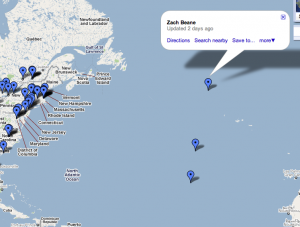One of the things that my current work does better than anywhere I’ve worked before is logging. When something goes wrong, there is a log file that you can dig through to find all kinds of information about what you were doing and how things were going.
As I move forward programming a game with my UNet library, I want to make sure that I can easily log all the network traffic during testing runs at least.
In looking through the various Lisp logging packages out there, I decided on Nick Levine’s cl-log library.
I installed it in no time with quicklisp.
Then, I set to work trying to figure out how I could use it to log binary data.
Here’s what I ended up with. If you want to do something similar, this should give you a good starting point.
Serializing, unserializing, and categorizing
With my USerial library, I defined a serializer to keep track of the different categories of log messages. And, I made corresponding categories in cl-log.
(defcategory :packet)
(defcategory :error)
(defcategory :warning (or :error :warning))
(defcategory :info (or :warning :info))
Specializing the classes
There are two major classes that I specialized: base-message and base-messenger. For my toying around, I didn’t end up adding any functionality to the base-message class. I will show it here though so that you know you can do it.
())
(defclass serialized-messenger (base-messenger)
((filename :initarg :filename :reader serialized-messenger-filename)))
Then, I overrode the messenger-send-message generic function to create a binary header with my USerial library and then write the header and the message out.
(message serialized-message))
(let ((header (make-buffer 16)))
(serialize* (:uint64 (timestamp-universal-time
(message-timestamp message))
:log-category (message-category message)
:uint64 (buffer-length :buffer (message-description message)))
:buffer header)
(with-open-file (stream (serialized-messenger-filename messenger)
:direction :output
:if-does-not-exist :create
:if-exists :append
:element-type '(unsigned-byte 8))
(write-sequence header stream)
(write-sequence (message-description message) stream))))
Using it
To get things going, I then made a log manager that accepts my serialized-message type and started one of my serialized-messenger instances.
(make-instance 'log-manager
:message-class 'serialized-message))
(start-messenger 'serialized-messenger :name "binary-logger"
:filename "/tmp/binary-log.dat")
Once these were started, I made a little utility function to make it easy for me to make test messages and then invoked log-message a few times.
(serialize :string string :buffer (make-buffer)))
(log-message :warning (make-info "Warning"))
(log-message :info (make-info "This is info"))
Conclusions
In all, it has taken me about four times as long to write blog post as it did to install cl-log with quicklisp, peek through the cl-log documentation and source code enough to figure out how to do this, and write all of the code.
To really use this, I will probably separate out the category of a message from the serialized type of the message. This will probably involve adding a field to the serialized-message class to track the message type, adding an initialize-instance :before method for that class to look through the arguments to pull out the type, and then adding the type as an extra argument to log-message.

